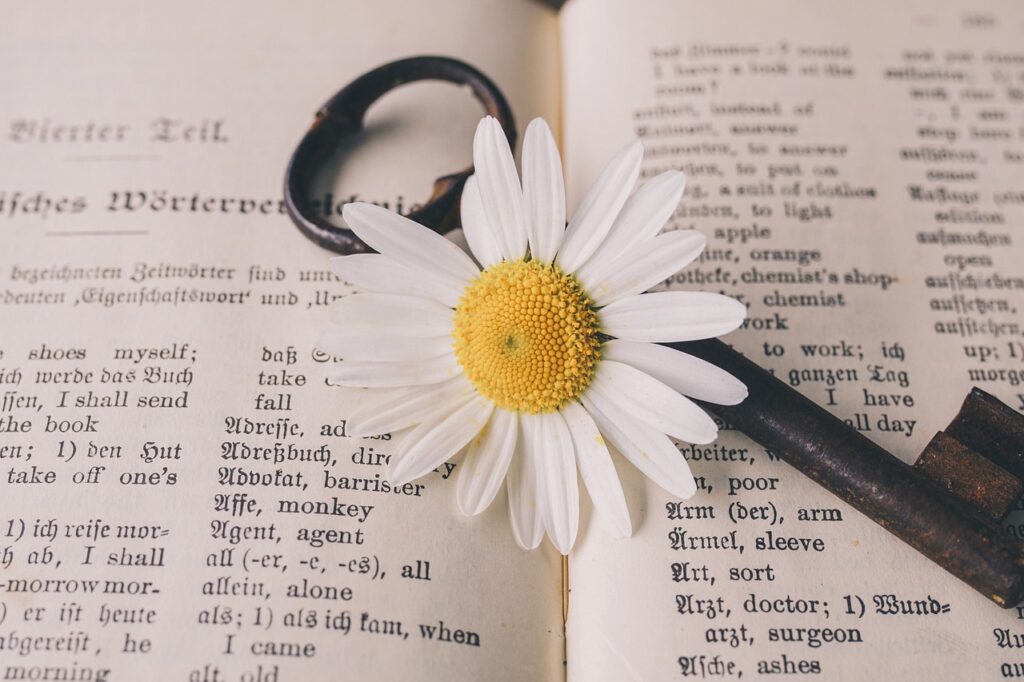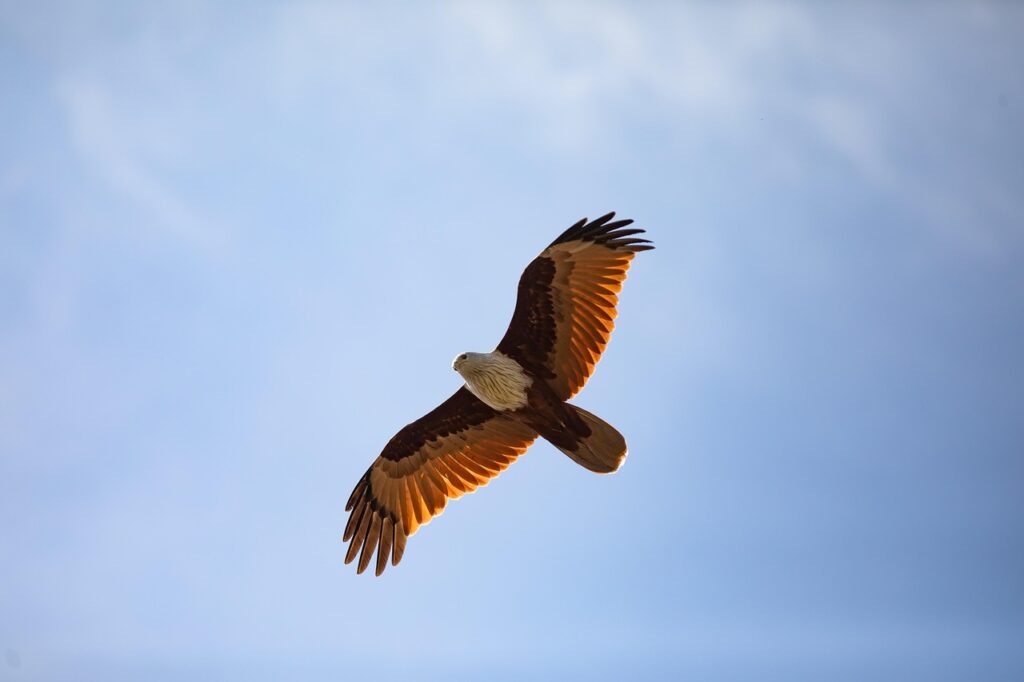In a previous post, we analyzed a poem with stanzas using a five step method. Analyzing a poem with one stanza can be a bit more challenging. You, as the reader, have to determine how to break down the sections in order to summarize the poem. That means that step three (summarize the stanzas) will look slightly different and will take some extra time. Just to review, here are the five steps for analyzing a poem:
- Step One: Read the poem and count the lines
- Step Two: Inspect the first line, the last line, and the title
- Step Three: Summarize the stanzas
- Step Four: Look for metaphor, simile, and personification
- Step Five: Combine your findings and determine a meaning

A Longer Poem with One Stanza
Take a look at this example of a longer poem with one stanza–“Eagle Poem” by Joy Harjo. It may seem intimidating at first to tackle an analysis of a poem like this one. It’s like reading an essay with no paragraphs. Stanzas give us a way to analyze the poem in chunks. But, let’s get started with the first step and work strategically through all five.
Eagle Poem by Joy Harjo 1
To pray you open your whole self
To sky, to earth, to sun, to moon
To one whole voice that is you.
And know there is more
That you can’t see, can’t hear;
Can’t know except in moments
Steadily growing, and in languages
That aren’t always sound but other
Circles of motion.
Like eagle that Sunday morning
Over Salt River. Circled in blue sky
In wind, swept our hearts clean
With sacred wings.
We see you, see ourselves and know
That we must take the utmost care
And kindness in all things.
Breathe in, knowing we are made of
All this, and breathe, knowing
We are truly blessed because we
Were born, and die soon within a
True circle of motion,
Like eagle rounding out the morning
Inside us.
We pray that it will be done
In beauty.
In beauty.
Step One: Read the Poem
After you’ve read the poem, count the number of lines. This poem has twenty-six of them. Now look for the number of periods. Just like in prose, a period designates the end of a thought. I see eight. Did you catch the one that was in the middle of a line (“Over Salt River. Circled in blue sky”)?
Step Two: Inspect the First Line, the Last Line, and the Title
Title:
Eagle Poem
Does the title appear in the poem? Yes. Eagle is said twice in the poem.
First full line:
To pray you open your whole self
To sky, to earth, to sun, to moon
To one whole voice that is you.
Last full line:
We pray that it will be done
In beauty.
In beauty.
Looking at the three of these together may not give you any ideas initially. We need to continue to look at the rest of the poem, but we do know that it will have something to do with an eagle. The first full line mentions the sky, which likely has something to do with the eagle since eagles fly in the sky.

Step Three: Summarize the Stanzas
Before we can analyze a poem with one stanza, we have to determine the best way to divide it into manageable pieces. This step is important for us as the reader because we need to tackle one idea at a time if we’re going to put our findings together easily.
When you are doing this step on your own, see if you can divide the lines up evenly first. That would be the simplest approach. If that doesn’t work, look at the number of full sentences and see if you can make “stanzas” for your analysis based on those.
In Joy Harjo’s poem, because each line seems to flow into the next, this was a difficult one to divide. But after reading it over several times, I chose to separate it into three sections based on what the poem was describing. The first has 9 lines, the second has 7, and the last has 9. This approach for creating our own stanzas for summary purposes is the most challenging because you have to base it on “topics”. That means you have to do a little “pre-analysis” to determine those topics.
Stanza One
To pray you open your whole self
To sky, to earth, to sun, to moon
To one whole voice that is you.
And know there is more
That you can’t see, can’t hear;
Can’t know except in moments
Steadily growing, and in languages
That aren’t always sound but other
Circles of motion.
Summary:
There is a voice within you that is growing and that you don’t fully understand yet. Open yourself to it.
Stanza Two
Like eagle that Sunday morning
Over Salt River. Circled in blue sky
In wind, swept our hearts clean
With sacred wings.
We see you, see ourselves and know
That we must take the utmost care
And kindness in all things.
Summary:
Like the eagle in the sky, we can see all things. We know that we must be kind.
Stanza Three
Breathe in, knowing we are made of
All this, and breathe, knowing
We are truly blessed because we
Were born, and die soon within a
True circle of motion,
Like eagle rounding out the morning
Inside us.
We pray that it will be done
In beauty.
In beauty.
Summary:
We are only here for a short time. Life is a cycle and we get one. We are part of all this (the earth).
Step Four: Look for Metaphor, Simile, and Personification
Simile:
We are truly blessed because we
Were born, and die soon within a
True circle of motion,
Like eagle rounding out the morning
Inside us.
Explanation:
Our lives are like the eagle flying in a circle in the morning. There is a circle of motion inside of us–the cycle of life and death.
Personification
Like eagle that Sunday morning
Over Salt River. Circled in blue sky
In wind, swept our hearts clean
With sacred wings.
Explanation:
The author gives the eagle, flying in the sky human or godlike traits. Watching the eagle soar cleansed the people watching. It was an uplifting and sacred experience. The eagle can also be a symbol for us as human beings, but we’ll cover what symbols are in a future post.
Step Five: Combine Your Findings and Determine a Meaning
After looking at all that we’ve gathered from this poem, the meaning seems to be that we are given one cycle of life and are meant to grow into who we are. We are capable of soaring like the eagle. In addition, we need to respect that others have that same destiny.
Next Steps:
If analyzing this poem inspired you to write you own and you need some direction, check out my poetry writing course. You’ll write a free verse poem like the one we analyzed today. The course is in Teachable and is called From Idea to Poem in Ten Easy Steps. I hope to see you there!
- Poetry Foundation. “Eagle Poem.” retrieved on February 15, 2025. https://www.poetryfoundation.org/poems/46545/eagle-poem ↩︎
